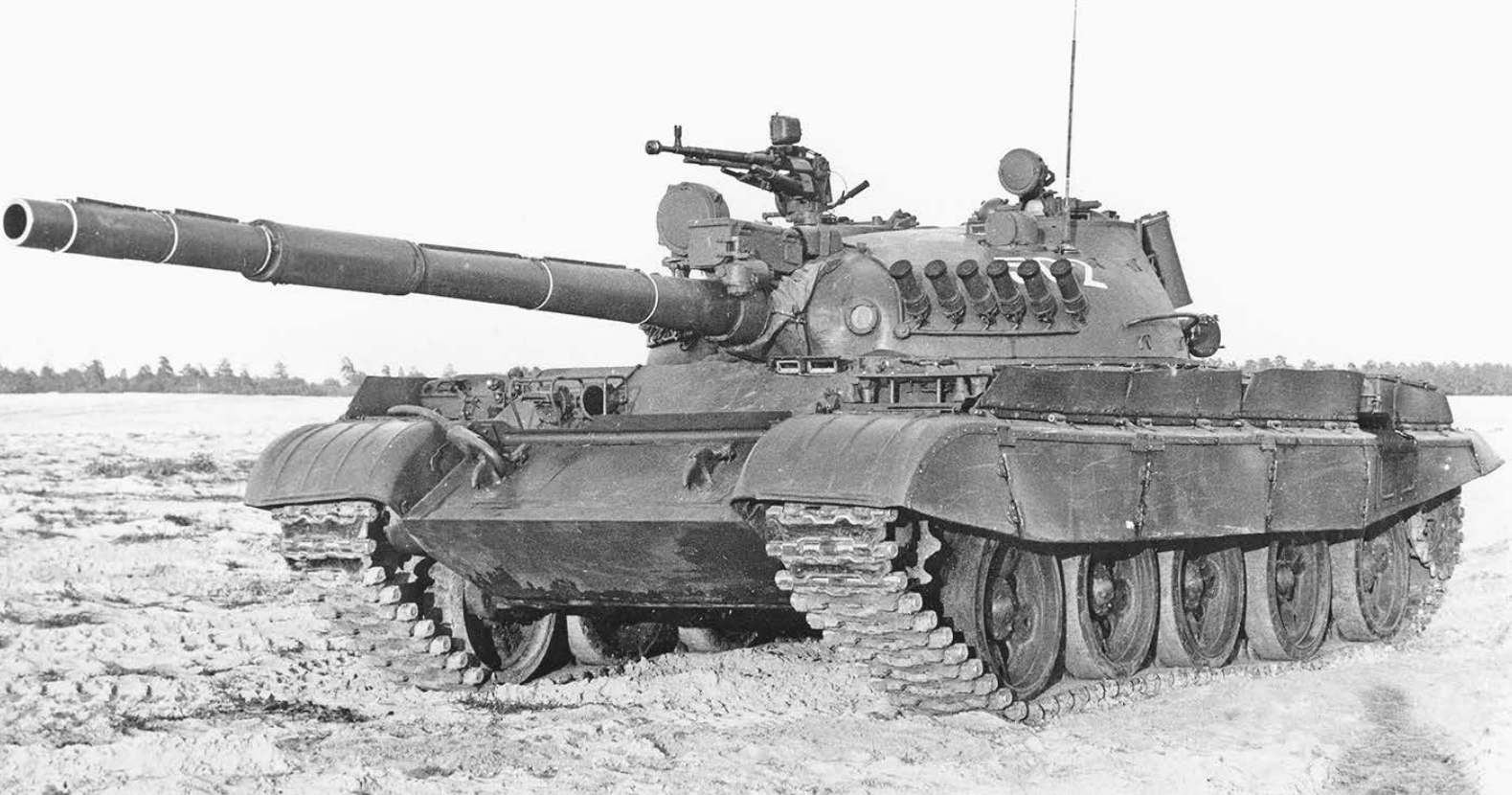[Would you like to see Object 169 in-game?]
Object 169
The Object 169 is a little-known but fascinating Soviet tank prototype that represents an important evolutionary step between the early T-62 and the later T-62M family. This vehicle stands out thanks to its smoke launcher application, similar to that of the T-72A, giving it a distinct appearance within the T-62 family.
Historical Background
Spoiler
Developed in the late 1970s, Object 169 was essentially a modernized T-62 with several enhancements that would eventually be implemented in the later T-62M series modernizations. While never mass-produced, it served as a testbed for several upgrades that were later implemented. Reportedly less than 10 were built. Due to its rarity, this tank is omitted from the majority of basic sources, including Wikipedia. It is known that at least one Object 169 was located at the Kazan Tank School. Due to its relative simplicity, it most likely served as a training vehicle, much like other basic Soviet tank models used for instructional purposes. A few examples were spotted recently in conflict zones, proving its real-world deployment, albeit in limited numbers.
Key Standard Features
Spoiler
Smoke Grenade Launchers: One of the distinguishing features of Object 169 was the integration of smoke grenade launchers “902B Tucha” mounted on the frontal part of the turret, similar to those later seen on the T-72A. This addition aimed to enhance the tank’s survivability by providing rapid concealment on the battlefield.
Laser Rangefinder: One of the standout features was a laser rangefinder, marking a big leap in fire accuracy for a T-62-based platform. Most likely it was the “KTD-1” seen on the T-62 obr. 1974. However, unlike the T-62M1, it lacked a full modern fire-control system, limiting its ability to automatically compute firing solutions.
Anti-Cumulative Screens: The tank was equipped with rubber-fabric side skirts designed to protect against shaped charge projectiles, thereby increasing its defensive capabilities against anti-tank weapons.
Gun Barrel Insulation: A thermal sleeve was fitted around the gun barrel to shield it from environmental influences and ensure consistent accuracy during firing by evenly distributing heat.
Optional Upgrades
Spoiler
Sources suggest that some Object 169s were later upgraded to include the fire-control capabilities of the T-62M1 and the ability to use ATGMs.
- Automatic Fire-Control System
This allowed the tank to automatically calculate the correct elevation for the main gun. It factored in variables such as range, ammunition type, barrel wear, and atmospheric conditions — a major improvement over manual estimation. On the T-62M1 this system was integrated into the gunner’s TShSM-41U sight, offering variable magnification and better target acquisition.
- 9K116-2 “Sheksna” ATGM System
As built, Object 169 did not include the ability to fire guided missiles (ATGMs) — another feature later introduced in T-62M1 variants.
Engine
Object 169 most likely retained the standard V-55 580 hp engine used in the original T-62. According to available sources, the upgraded powerplants (such as the V-55U or V-46-5M variants) chronologically began appearing later in serial T-62M1 production. While it’s unconfirmed whether Object 169 received this upgrade, it remains a plausible retrofit, especially considering that most T-62M1s were modernized T-62s.
Implementation
Spoiler
If Object 169 were to be added with the modernized fire control system and upgraded engine, it would become the fastest T-62 in War Thunder, thanks to the improved power-to-weight ratio due to the absence of the T-62M1’s additional applique armor. This would make it a highly mobile and flexible variant, sacrificing protection for speed.
If added in its standard configuration, Object 169 would serve as a slightly improved and more visually distinctive variant of the T-62, offering modest upgrades in utility and aesthetics without significantly altering the gameplay.
Object 169 would be best suited as an event vehicle, given its rarity, limited service history, and unique configuration. However, its final implementation is entirely up to the developers’ discretion.
Object 169 – Specifications
Spoiler
It is said that examining the engine bay may help determine which type of engine was installed in a T-62.
- Crew: 4 (Commander, Gunner, Loader, Driver)
- Weight: ~38 tons
- Length (gun forward): ~9.34 m
- Width: ~3.30 m
- Height: ~2.40 m
- Armor Protection: Base T-62 armor with minor protection upgrades:
- Rubber-fabric side skirts
- Tucha smoke grenade launchers
- Main Armament: 115mm U-5TS (2A20) smoothbore gun
- Ammunition Types: APFSDS, HEAT, HE
- Ammo Load: ~40 rounds
- Secondary Armament: 7.62mm PKT coaxial + 12.7mm DShKM AA machine gun
- Fire Control System:
- KTD-1 laser rangefinder
- No ballistic computer (Optional upgrade)
- Missile Capability: Not equipped (Optional upgrade)
- Night Vision: Basic night vision for commander and gunner
- Engine: V-55 diesel engine, 580 hp
- Top Speed (road): ~50 km/h
- Power-to-Weight Ratio: ~15.2 hp/ton
- Suspension: Torsion bar
- Operational Range: ~450 km (road), ~650 km with external tanks
Additional Gallery
View
Sources
View
Disclaimer: Most sources pertaining to this specific vehicle are incredibly rare and conflict with forum rule 3.1.6. Therefore they have not been included in this post. However, they remain publicly accessible through open sources on the internet.
In accordance with forum guidelines, two independent sources (that do not conflict with forum rule 3.1.6) have been provided that specifically reference this vehicle:
Список модификаций Т-62
Comprehensive Soviet/Russian vehicle collection
Supporting sources
View
https://www.military-references.com/wp-content/uploads/books/tanks/ussr/t-62/T-62_Medium_Tank_Operators_Manual.pdf
T-62M - War History
T-62M
T-62 - Wikipedia







